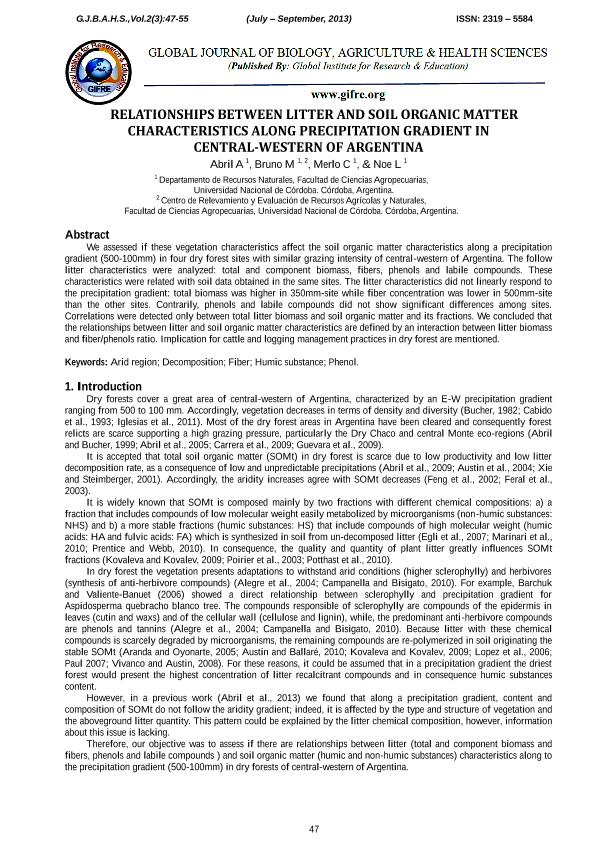Artículo
Relationships between litter and soil organic matter characteristics along precipitation gradient in dry forests of central-western of Argentina.
Fecha de publicación:
09/2013
Editorial:
Global Institute for Research & Education
Revista:
Global Journal of Biology, Agriculture & Health Sciences
ISSN:
2319-5584
Idioma:
Inglés
Tipo de recurso:
Artículo publicado
Clasificación temática:
Resumen
We assessed if these vegetation characteristics affect the soil organic matter characteristics along a precipitation gradient (500-100mm) in four dry forest sites with similar grazing intensity of central-western of Argentina. The follow litter characteristics were analyzed: total and component biomass, fibers, phenols and labile compounds. These characteristics were related with soil data obtained in the same sites. The litter characteristics did not linearly respond to the precipitation gradient: total biomass was higher in 350mm-site while fiber concentration was lower in 500mm-site than the other sites. Contrarily, phenols and labile compounds did not show significant differences among sites. Correlations were detected only between total litter biomass and soil organic matter and its fractions. We concluded that the relationships between litter and soil organic matter characteristics are defined by an interaction between litter biomass and fiber/phenols ratio. Implication for cattle and logging management practices in dry forest are mentioned.
Palabras clave:
Arid Region
,
Decomposition
,
Fiber
,
Humic Substance
Archivos asociados
Licencia
Identificadores
Colecciones
Articulos(CICYTTP)
Articulos de CENTRO DE INV.CIENT.Y TRANSFERENCIA TEC A LA PROD
Articulos de CENTRO DE INV.CIENT.Y TRANSFERENCIA TEC A LA PROD
Citación
Abril, Adriana; Bruno, Marina; Merlo, Carolina; Noe, Laura Belén; Relationships between litter and soil organic matter characteristics along precipitation gradient in dry forests of central-western of Argentina.; Global Institute for Research & Education; Global Journal of Biology, Agriculture & Health Sciences; 2; 3; 9-2013; 47-55
Compartir




